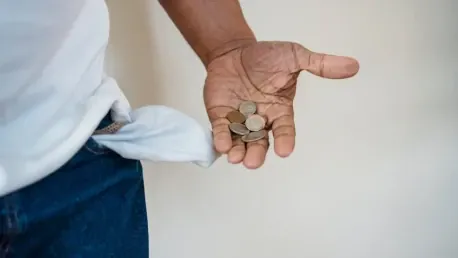Iran is grappling with unprecedented economic and socio-political challenges as protests and strikes erupt across multiple sectors. The Iranian population is increasingly vocal about their grievances related to inflation, wage suppression, and state repression, painting a picture of widespread unrest. This discontent is exacerbated by controversial judicial rulings and acts of violence by security forces, encapsulating an era of economic distress and socio-political turmoil for the Iranian regime.
Widespread Economic Despair
Economic despair in Iran is notably illustrated by ongoing demands for substantial wage increases from workers in the energy sector, a crucial part of the Iranian economy. On February 27, workers at the South Pars gas complex in southern Iran joined their counterparts in the Fifth and Sixth Refineries, demanding a 70% wage hike. This reflects a broader campaign against wage suppression, urging workers across various sectors to unite in resisting economic injustices. This collective acknowledgment highlights the inadequacy of current wages amidst soaring living costs, underlining the deep financial strain felt by many Iranian workers.
The economic crisis extends beyond the energy sector to the housing market, as evidenced by protests in Kashan. Applicants to the National Housing Plan have vocalized their frustration over government mismanagement and unaffordable housing prices. Their grievances are rooted in years of unmet promises and added financial stress imposed by authorities. This protest served as a platform for citizens to express their displeasure at perceived incompetence and demand accountability. These demonstrations underscore widespread frustration over chronic economic issues and the authorities’ inability to address them effectively.
Merchant Protests and Price Controls
Discontent is not limited to workers and housing applicants but also spreads to merchants in Tehran’s Molavi Bazaar, a central hub for food and commodity trade. Merchants protested against stringent government-imposed price controls, which required vendors to sell Indian rice below their purchase price. This policy exemplifies the government’s heavy-handed approach to controlling inflation, often at the expense of small businesses. The resulting shop closures and disruptions in trade activities, especially significant ahead of Persian New Year celebrations, underscore broader frustrations regarding top-down economic policies’ inefficacies and harm.
Economic instability is further highlighted by strikes from food and dry goods traders in Tehran, who protested deteriorating business conditions, rising taxes, and perceived government mismanagement. These traders, representative of an already struggling sector, reveal the broader economic adversities faced under current policies. The widespread shop closures and unified calls for support reveal a collective resolve to stand against systemic economic challenges. Their plight reflects the broader economic struggles experienced by various businesses under Iran’s current regime.
Judicial Controversies and Public Outrage
Public outrage has been further ignited by judicial controversies, particularly the case involving the acquittal of a senior military official who shot and killed a young man in Kermanshah. Initially charged with premeditated murder, the official received just a one-year prison term for “negligence” and was ordered to pay blood money (diya) for the death. This ruling underscores perceived judicial double standards, where ordinary citizens accused of lesser crimes often face severe penalties. This case has come to symbolize the failure of the judicial system to uphold equitable justice, thereby eroding public trust in state institutions.
Adding to the economic crisis, severe currency devaluation and inflation exacerbate the Iranian populace’s plight. The rial’s steep decline, with the U.S. dollar exceeding 96,000 tomans in unofficial markets, coupled with skyrocketing gold prices, signals a deteriorating economic environment. Workers across various sectors remain embroiled in disputes over stagnating wages as authorities delay setting the minimum wage for 2025. This procrastination highlights the pervasive uncertainty and financial instability plaguing Iran, further deepening public dissatisfaction amid these challenging times.
State Violence and Minority Oppression
The surge of protests and strikes spreading across various sectors reflects Iran’s significant economic and socio-political challenges. The Iranian populace is becoming increasingly vocal about their mounting grievances, primarily centered around rampant inflation, suppressed wages, and widespread state repression. This growing unrest paints a vivid picture of national dissatisfaction. Exacerbating these issues are controversial judicial rulings and incidents of violence carried out by security forces, further highlighting the severe economic distress and socio-political turmoil engulfing the country. These conditions reflect a critical moment for the Iranian regime, with the population’s dissatisfaction reaching new heights and posing substantial threats to the government’s stability. The movement underscores deep-seated issues that have long been brewing, such as economic mismanagement, lack of political freedoms, and human rights violations. The combination of economic hardship and political repression has culminated in an environment ripe for widespread discontent and potential transformation.









